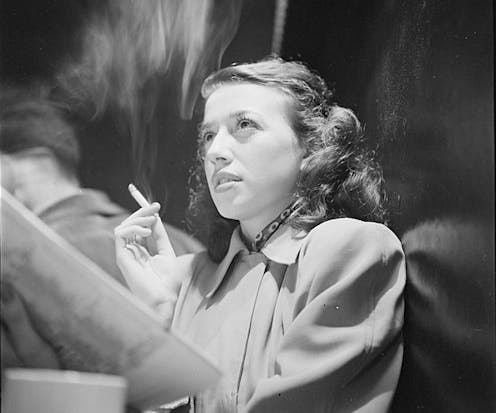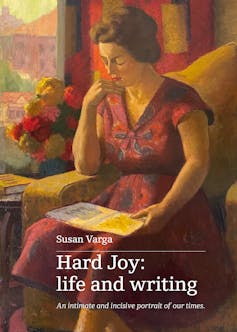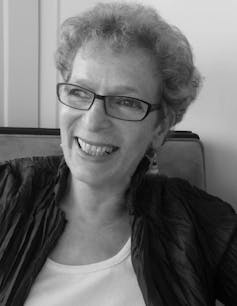
Historically, memoir has been a genre for older authors, reflecting back on their lives, but in recent years there has been an increase in life writing that is tied to a set of ideas or a political agenda.
Some memoirs are reckonings, such as Kathryn Heyman’s Fury and Bri Lee’s Eggshell Skull, both of which confront the spectre of sexual assault. Chloe Higgins’ The Girls and Lech Blaine’s Car Crash face the authors’ extraordinary grief. A number of writers have addressed the relationship between the medical system and women’s health, including Natalie Kon-Yu’s The Cost of Labour and Sarah Sentilles’ Stranger Care.
These are just a handful of examples – memoir continues to be prominent in bookstores. The benefit for publishers with these books is that they afford a certain sort of publicity campaign. They work well for literary festival appearances, radio interviews and excerpts in news media.
Review: Hard Joy: Life and Writing – Susan Varga (Upswell)

Hard Joy by Susan Varga is a different proposition. It is an idiosyncratic and often intimate work – likely her last, as Varga says towards the end of the book.
This memoir does not situate itself as part of the current publishing trend, which is perhaps one of the reasons it has been released by the small independent publisher Upswell, whose stated aim is “making books to last: books with the potential to still be noticed, and noted, after decades”.
Hard Joy is a highly personal account of some of Australia’s major cultural moments since the second world war, featuring a large cast of characters. It speaks of the importance of honest relationships and a rich life of the mind.
The book opens with Varga’s journey to Sydney as a child – a move forced on her family after the war. She escaped the Nazis in Hungary with her mother and sister; her father shared the fate of millions of other Jews and did not survive the war. The journey out of Hungary and her mother’s story were the subjects of Varga’s first book, Heddy and Me (1994).
Her mother remarried – this is the man whom Varga calls “Dad” – and the family enjoyed a prosperous life on Sydney’s lower North Shore. Later in the book, we come to understand that their relationships were not as they may have appeared.
When Varga studied at the University of Sydney in the 1960s, she joined the Sydney Push, an anarchic social movement that was experimenting with free love and other countercultural ideas, though in this section of Hard Joy she is less interested in the political earthquakes of the time than in her personal relationships.
It was towards the end of this period that Varga married the man she calls “the Dutchman”, whom she met at a university party. He went on to become a doctor and they moved to the Netherlands while she finished her master’s thesis on Charles Dickens, then on to London and Bendigo. The marriage did not last.
After a period working in Western Sydney as a community organiser and contributing to film projects, Varga went to law school and then became a barrister in her early 40s. This period roughly aligns with her de facto relationship with “Rick” when she became stepmother to his son. The painful ending of this relationship is evident in Varga’s avoidance of describing it in detail (and in her choice of pseudonym for “Rick”).
Read more: How one woman's traumatic experience drove her investigation into pregnancy and mental health
Lifelong love
The relationship that commands the most attention is between Varga and her wife, fellow writer Anne Coombs. This is where Hard Joy is most candid. The book describes the extraordinary happiness of their honeymoon in Paris and a later period of difficulty and separation. Varga writes that she had had relationships with women before meeting Anne, but she had not anticipated a lifelong partnership with a woman when she was younger.
As Susan Sheridan noted in her review of Hard Joy, Coombs died at the start of this year. Her passing is not mentioned in Hard Joy but the information adds to the poignancy of the tribute to their relationship.

The other long-term relationship that Varga started in her 40s was with writing. After Heddy and Me, she published two novels, Happy Families (1999) and Headlong (2009), and a book of poetry, Rupture (2016). She also co-wrote a non-fiction book with Coombs titled Broometime (2001). It was as an author that Varga felt herself actualised.
Towards the end of Hard Joy, we learn that Varga suffered a stroke and had to relearn how to speak and write. At this point poetry became her primary mode as she was only able to compose in short fragments.
Perhaps this is part of the reason for the book’s unusual typesetting: rather than indented paragraphs, as is standard in contemporary Australian books, Hard Joy has line breaks with left-justified text. This has the effect of making the paragraphs stand on their own as kinds of fragments.
Another unusual element is that the book includes photos without captions – these are in a list at the end. This means we are met with faces and settings without having a clear idea of who we are seeing. Although this declutters the page, it can also feel distancing.
The third element that sets this book apart from more conventional memoirs is the inclusion of Varga’s poetry throughout. On occasion, a poem will retell a scene from a different perspective or with a different emphasis. In other instances, switching modes introduces new information. The poetry offers readings that are, by turns, estranging and immediate, since it calls attention to its own form as it pares language back to its core components.
Inheritances
Like many Australians, Varga identifies her family as “middle class; nothing special”. But the extent of her father’s property portfolio (at the end of his life, he was driven around in a car to inspect his buildings) suggests this is not quite accurate. Varga inherited enough money to establish a charity that employed two staff and to make significant donations to other organisations. An interrogation of her relationship with wealth and its attendant freedoms and complications would have been a worthwhile addition to Hard Joy.
I would also have been interested to read more about Varga’s relationships with the men in her life. At the end of the book, she briefly mentions inappropriate behaviour from her (non-biological) father – behaviour that was eventually stopped by her mother. She also mentions that he assaulted one of her friends. The discussions of the gender politics of the Push and her time as a barrister are also relatively brief. Including these personages and situations without a detailed discussion meant my curiosity was piqued, but not satisfied.
Throughout the book, Varga engages with the question of what it means to write a memoir, helping to set the reader’s expectations. In the first chapter, she asks: “How to pin the myriad pieces of a life together in one’s clumsy writing net?”
Later, she says memoir is a “random collection of memory, a bit like a bird nest, scraps and twigs collected from obscure places of the psyche”.
She addresses some of her past behaviour from a contemporary viewpoint with comments such as “no one gave it a thought” (regarding relationship swaps in the Push), or “This hadn’t occurred to me”, when she finds out, a few years into their friendship, that a friend of hers is Aboriginal.
“If this was another kind of memoir,” she observes, “I would describe in more detail the political and social contexts in which I was embroiled.” Later, she remarks: “Looking back, I am opaque to myself.”
These acknowledgements recognise both the shortcomings and the limits of memoir as a form. As much as the hard joys of writing have afforded Varga an opportunity to reflect on her life, she suggests there are terrains that the memoir cannot traverse and pasts that must remain distant. Our view is always, and only ever, from the perspective of the author alone, so our proximity to and distance from the past is set alongside hers.
Alice Grundy is a research assistant and PhD student at ANU.
This article was originally published on The Conversation. Read the original article.







